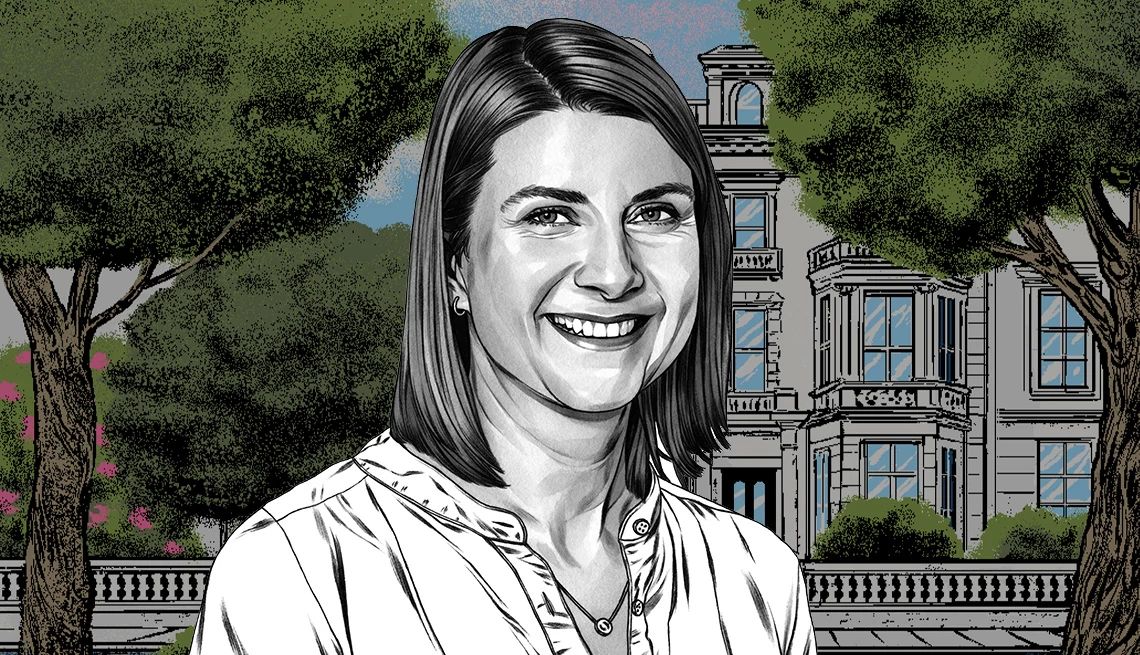Play all audios:
It doesn’t take 007’s eagle eye to detect the parallels between the real-life Owtram sisters and the fictional Penny and Josephine. As Wray explains, the Owtrams’ book became the springboard
for the novel. “I wrote their memoir from the stories that they told me — and then stories I imagined in my novelist brain came out of that,” she says. “Their memoir was very much based on
their war years. I wanted to write a novel which celebrated those women as seniors.” Until the Owtrams, Wray hadn’t had deep relationships with people of a certain age. She lost her
grandparents early on, and her sense was that people born in the 1920s were “stuffy,” as she once wrote in an essay, and “stuck in a time warp.” Within Wray’s own family, once relatives hit
the age of 60, they didn’t set the most stimulating examples of what the later years could be. “To meet these 90-somethings who are still traveling, reading, engaged in culture more than
just sort of sitting in front of the TV was tremendous.” “It really seemed that people sort of gave up when they hit 60” Wray says. “I didn’t really know Dad’s mom, but she was very
Victorian. Mom’s mom just sat and watched a lot of TV, I suppose. So to meet these 90-somethings who are still traveling, reading, engaged in culture more than just sort of sitting in front
of the TV was tremendous.” As Wray’s friendship with the Ostrams grew, her views on aging — especially her own — transformed. “I suppose I just thought that I was heading for the scrap heap,
really,” she said. “I mean, that sounds really silly, doesn’t it? Fifty is nothing, is it? But … I’ve been in publishing for quite a long time, and when you’re in your 20s, you’re the
bright young thing, and then all of a sudden you’re in your 50s, and you’re not the bright young thing, and the culture is very youth-oriented in some ways. So meeting Pat and Jean and
hanging out with them, I got new impetus in my fiction as well.” Wray grew up Gloucester, in the west of England, in what she calls “a very ordinary upbringing.” Encouraged by her English
teacher, she published her first short story in _Just Seventeen_ magazine when she was 14 years old — and bought a black denim jacket with the proceeds. From there, Wray continued to
contribute short stories to the magazine, which helped to pay for her experimental psychology degree at St Edmund Hall at Oxford University. After she “flunked” out of college and no
graduate training programs would have her, she moved to London and took a series of temp jobs to support herself, including a stint at an audiobook company. There, she confided in a
colleague, a respected science-fiction writer, that she had always wanted to be a writer, and he “dared” her to write a novel, she says. A few weeks later, she handed him a first full-length
manuscript, which he helped her tweak and then passed on to his editor at Little, Brown and Company, and Wray’s romance-writing career was born. “I was extraordinarily lucky,” Wray says,
entering the chick-lit craze in the 1990s, a time when books like _Bridget Jones’s Diary_ took the pop-culture literary scene by storm and there was suddenly a rush for young female voices.
“I’ve written an awful lot of romance novels, but I think I was never really romantic. I was always much more interested in my secondary characters … I was very much stuck in this
boy-meets-girl groove, which just wasn’t interesting me at all.” Still, over the years, she had developed a name as a romance author, and she found herself feeling stifled. “It was a real
leap of faith to say, ‘Does anybody want me as something else?’” Wray says. “But Jean’s encouragement made me think, why not? You’re only wasting your life, aren’t you, if you’re not doing
what you want to be doing?”

